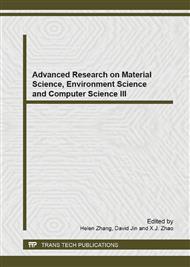p.71
p.75
p.80
p.84
p.88
p.92
p.97
p.101
p.105
Preparation and Process Research of Starch/Thatch Composite
Abstract:
A new type of starch/thatch composite with degradable property, which took starch as adhesive, thatch particles as main raw material and water as plasticizer, was successfully prepared by hot-embossing method. Mechanical properties of the composite such as hardness, tensile strength and ultimate elongation were investigated, and the effects of processing conditions on the mechanical properties were discussed. The results showed that the composite had the highest tensile strength and ultimate elongation but the lowest hardness when the amount of starch adhesive was 40% (dry basis) and water was 25% (wet basis) at hot-embossing temperature of 120°C for 10 min. It was suggested in our works that the hot-embossing method could be used to fabricate starch/thatch composite with starch content ranging from 20% to 50%, and that the composite with good hot-embossing process could be obtained by properly controlling the amount of starch and water.
Info:
Periodical:
Pages:
88-91
Citation:
Online since:
January 2014
Authors:
Keywords:
Price:
Сopyright:
© 2014 Trans Tech Publications Ltd. All Rights Reserved
Share:
Citation:


